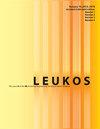Uncertainty Analysis of Cylindrical Illuminance Approximation
IF 2.6
2区 工程技术
Q2 CONSTRUCTION & BUILDING TECHNOLOGY
引用次数: 8
Abstract
ABSTRACT Cylindrical illuminance has long been known as a metric of light modeling in three-dimensional space. Though it is possible to employ a dedicated meter to measure this metric, it is considered more practical to measure cubic illuminance data on the field. However, the cubic illuminance method is an approximation, which may yield errors relative to the true value. This article therefore presents uncertainty analysis of the calculation of cylindrical illuminance at a point due to multiple random point sources, using three different approaches. It is found that the original approach with the sum of individual cylindrical illuminance yields results highly similar to the true values. A similar approach only considering the total cubic illuminance yields uncertainty and is comparable to the alternative approach using averaged vertical illuminance. Applying the last approach with a larger number of axes leads to higher accuracy. To ensure very low uncertainty, in-field cylindrical illuminance measurement should be performed on at least 16 axes on the x–y plane.圆柱照度近似的不确定度分析
长期以来,柱面照度一直被认为是三维空间光建模的度量。虽然可以使用专用仪表来测量这一度量,但在现场测量立方照度数据被认为更实用。然而,三次照度法是一种近似值,可能会产生相对于真实值的误差。因此,本文采用三种不同的方法,对由于多个随机点源而导致的一点柱面照度计算进行了不确定性分析。结果表明,原方法对单个柱面照度求和的结果与真实值非常接近。仅考虑总立方照度的类似方法产生不确定性,并且与使用平均垂直照度的替代方法相当。将最后一种方法应用于较大数量的轴,可以获得更高的精度。为了确保非常低的不确定度,应在x-y平面上至少16个轴上进行场内圆柱形照度测量。
本文章由计算机程序翻译,如有差异,请以英文原文为准。
求助全文
约1分钟内获得全文
求助全文
来源期刊

Leukos
工程技术-光学
CiteScore
7.60
自引率
5.60%
发文量
19
审稿时长
>12 weeks
期刊介绍:
The Illuminating Engineering Society of North America and our publisher Taylor & Francis make every effort to ensure the accuracy of all the information (the "Content") contained in our publications. However, The Illuminating Engineering Society of North America and our publisher Taylor & Francis, our agents, and our licensors make no representations or warranties whatsoever as to the accuracy, completeness, or suitability for any purpose of the Content. Any opinions and views expressed in this publication are the opinions and views of the authors, and are not the views of or endorsed by The Illuminating Engineering Society of North America and our publisher Taylor & Francis. The accuracy of the Content should not be relied upon and should be independently verified with primary sources of information. The Illuminating Engineering Society of North America and our publisher Taylor & Francis shall not be liable for any losses, actions, claims, proceedings, demands, costs, expenses, damages, and other liabilities whatsoever or howsoever caused arising directly or indirectly in connection with, in relation to, or arising out of the use of the Content. Terms & Conditions of access and use can be found at http://www.tandfonline.com/page/terms-and-conditions .
 求助内容:
求助内容: 应助结果提醒方式:
应助结果提醒方式:


